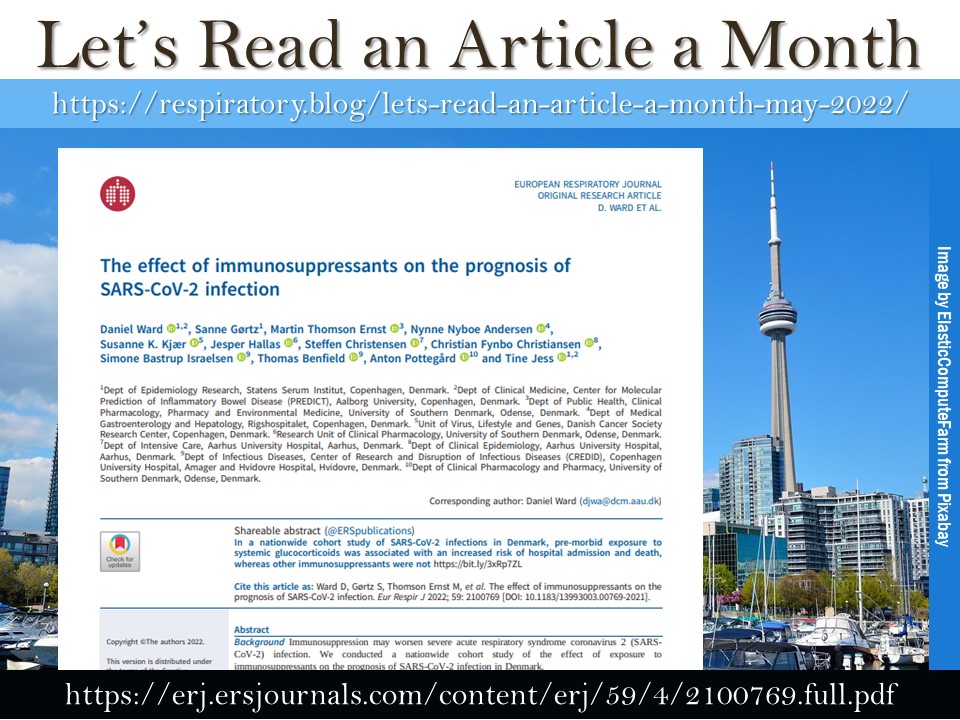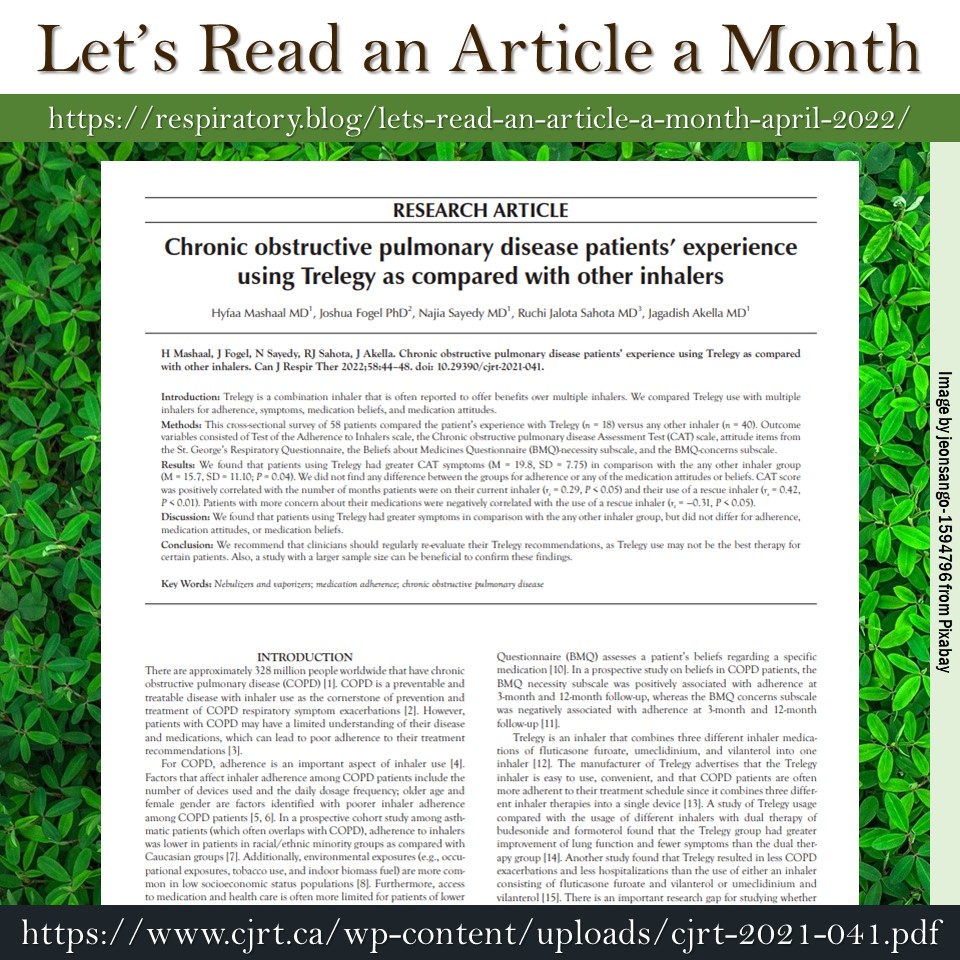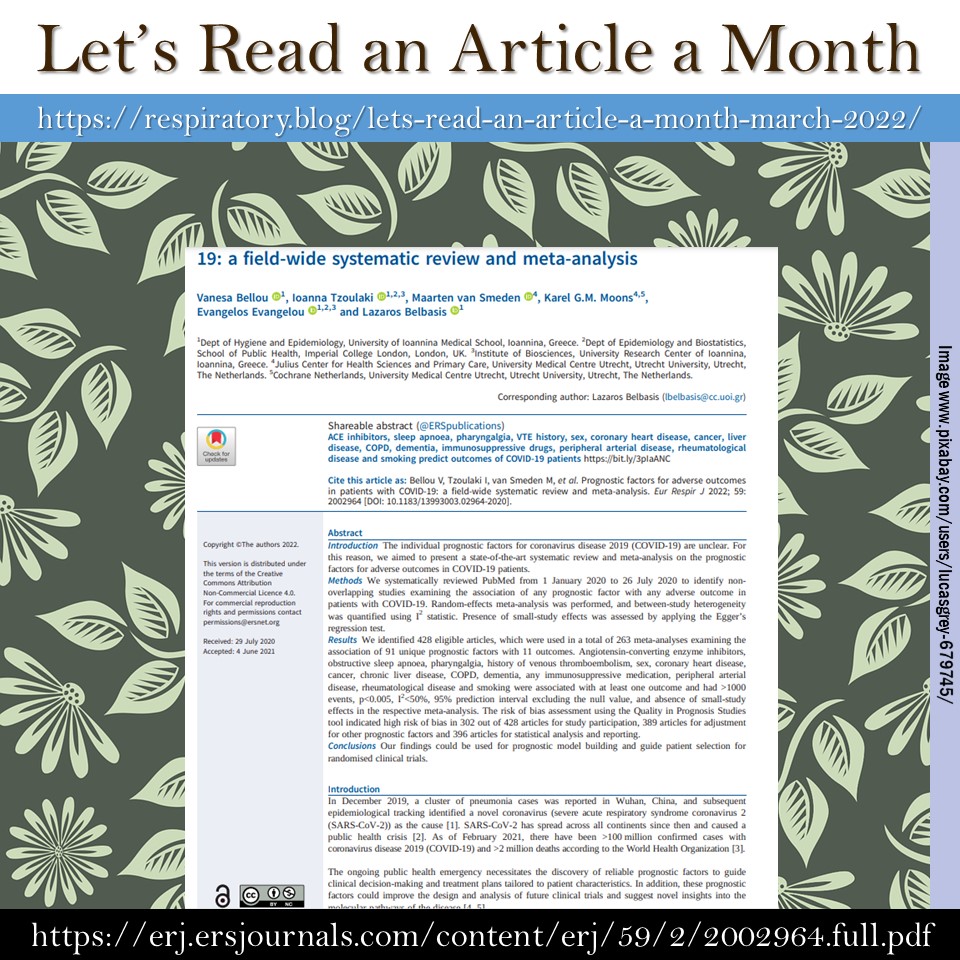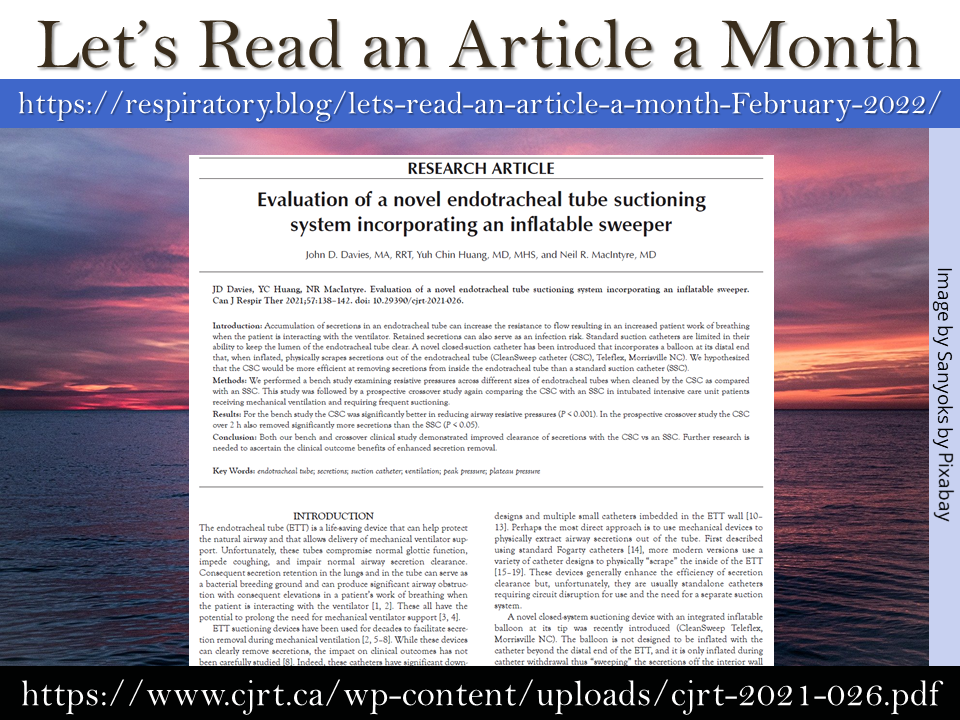
Every month I read an open-access article. I share the title and associated link with my followers to encourage clinicians to read more articles, stay up to date, and continue to grow.
The objective of this month’s paper is to “to conduct a nationwide cohort study of the effect of exposure to immunosuppressants on the risk of hospital admission, intensive care unit (ICU) admission and death among all SARS-CoV-2 test-positive patients in Denmark from February 2020 to October 2020” (p2).
The effect of immunosuppressants on the prognosis of SARS-CoV-2 infection
By: Daniel Ward, Sanne Gørtz, Martin Thomson Ernst, Nynne Nyboe Andersen, Susanne K. Kjær, Jesper Hallas, Steffen Christensen, Christian Fynbo Christiansen, Simone Bastrup Israelsen, Thomas Benfield, Anton Pottegård, and Tine Jess.
European Respiratory Journal 2022 59: 2100769; DOI: 10.1183/13993003.00769-2021
Link to the article: https://erj.ersjournals.com/content/erj/59/4/2100769.full.pdf
Just a few quotes from the article to get you thinking and started:
“A composite immunosuppressant exposure was associated with a significantly increased risk of death, which was mainly driven by a doubling of risk associated with systemic glucocorticoids. Glucocorticoids were also associated with a 34% increased risk of hospital admission, while the risk of ICU admission was not significantly increased”.
Page 6
“Glucocorticoids were associated with increased risk of ICU admission or death in patients with comorbid inflammatory bowel diseases; glucocorticoids were associated with greater risk of hospital admission in patients with comorbid rheumatic diseases”.
Page 6
“While other pharmacological interventions remain relevant research candidates, evidence from multiple sources indicates the importance of glucocorticoids on prognosis, the effect of which may depend on timing in the disease course. Our findings that other immunosuppressants were not significantly associated with severe outcomes are tentative, but in context they support the continued use of steroid-sparing immunosuppressants for a broad patient population with ongoing healthcare needs during the pandemic.” (pp 7-8).
Pages 7 to 8
Happy reading and learning,
Farzad Refahi
March 27, 2022
https://respiratory.blog/lets-read-an-article-a-month-may-2022/



